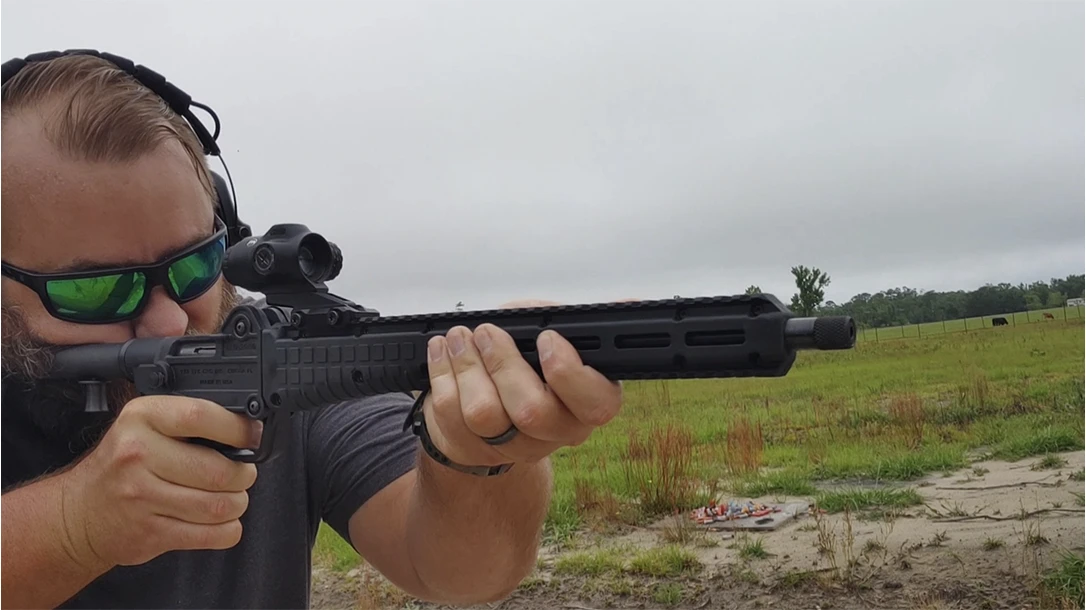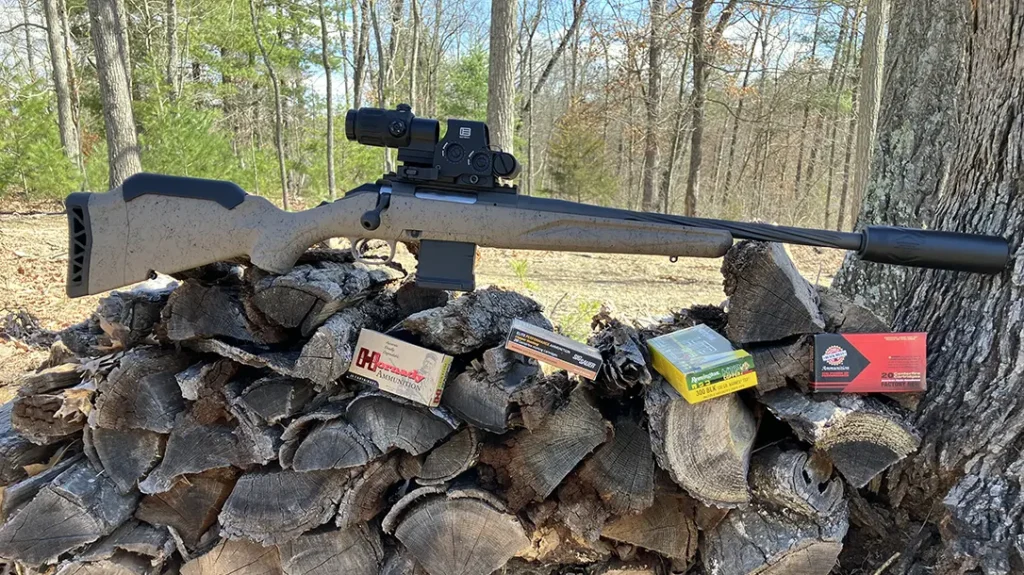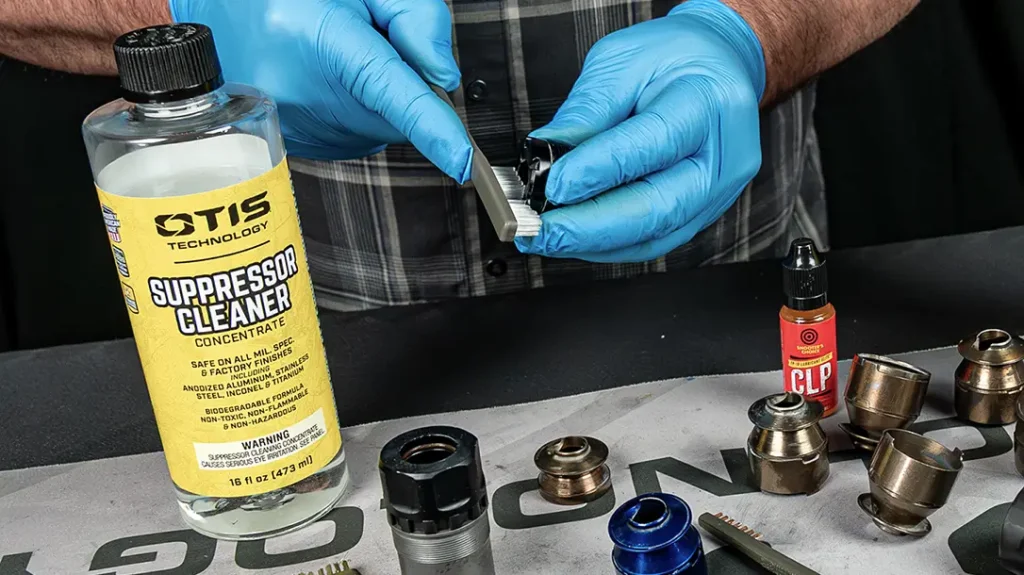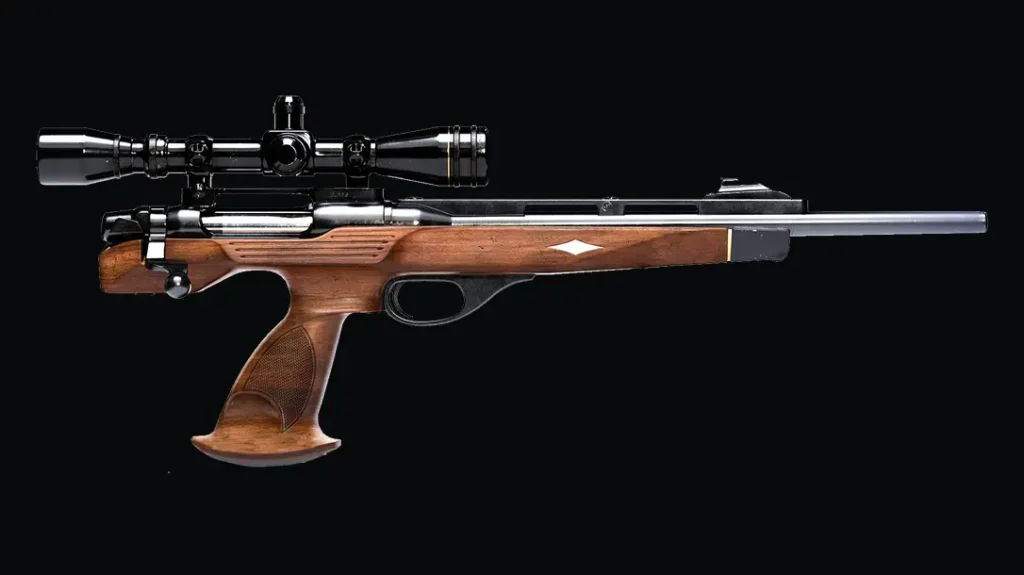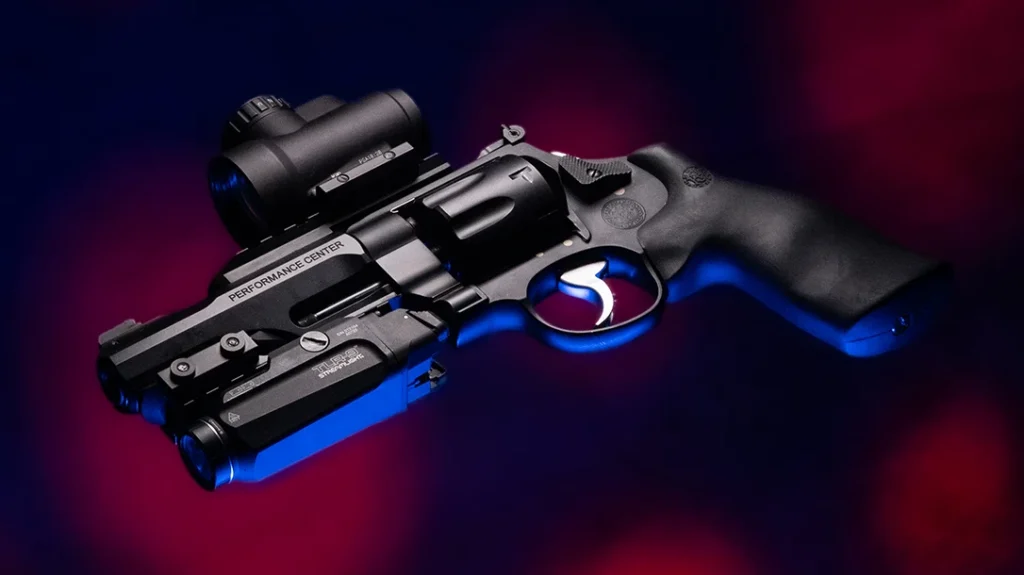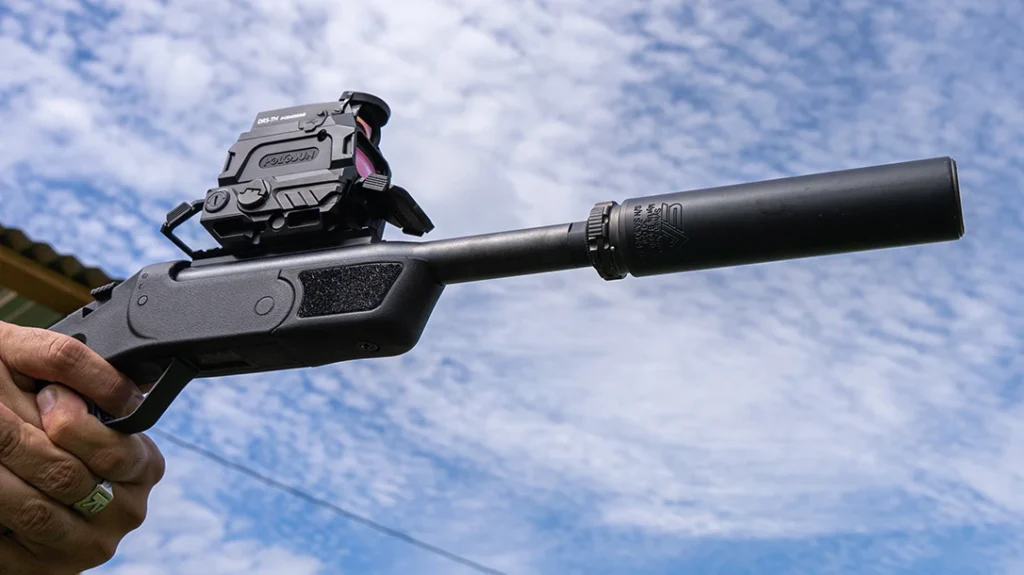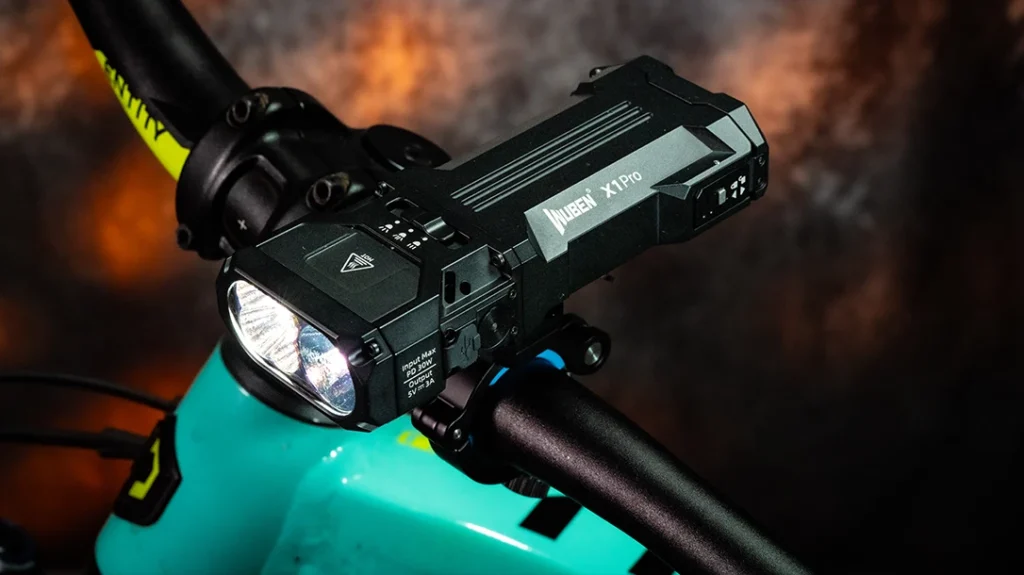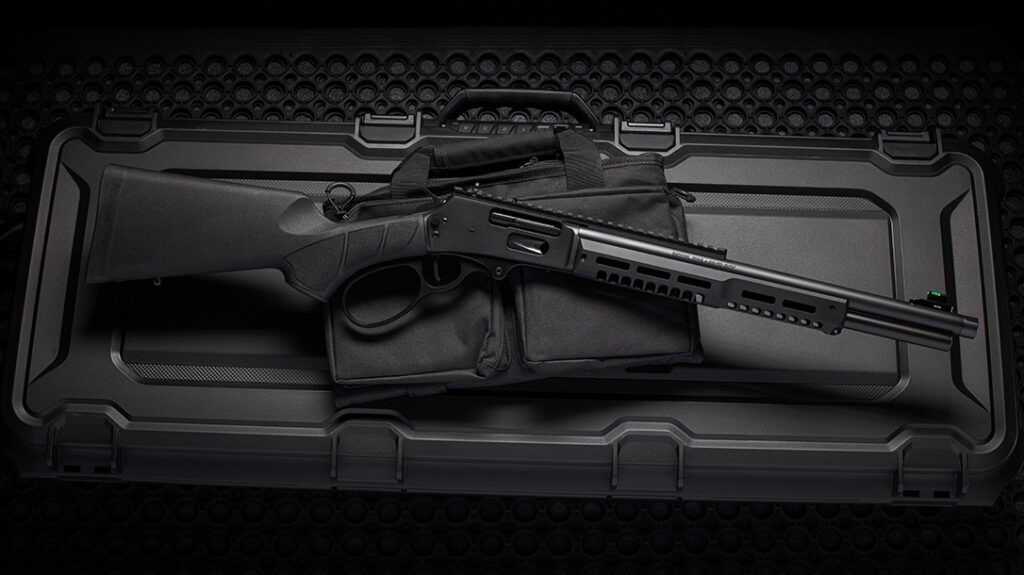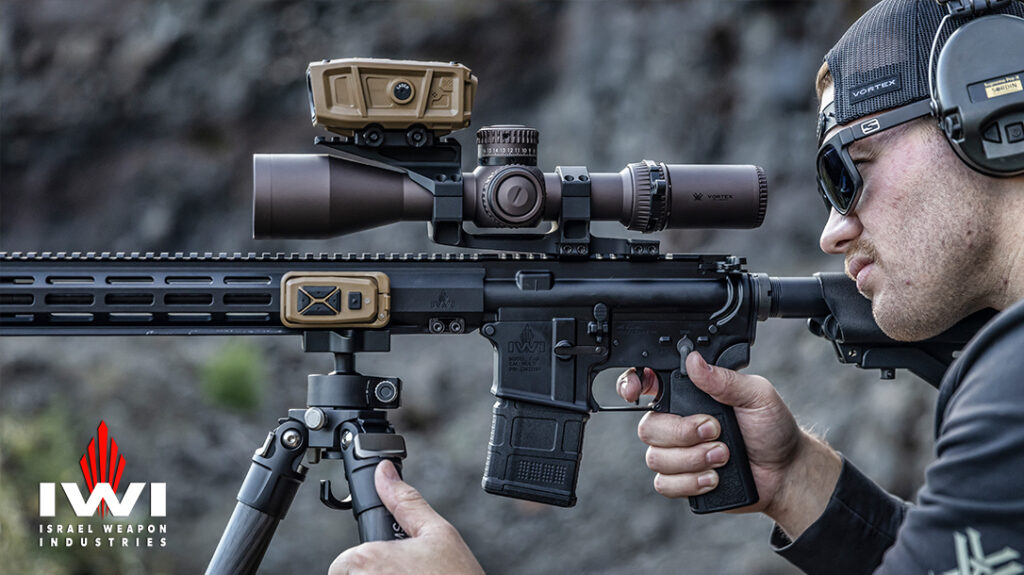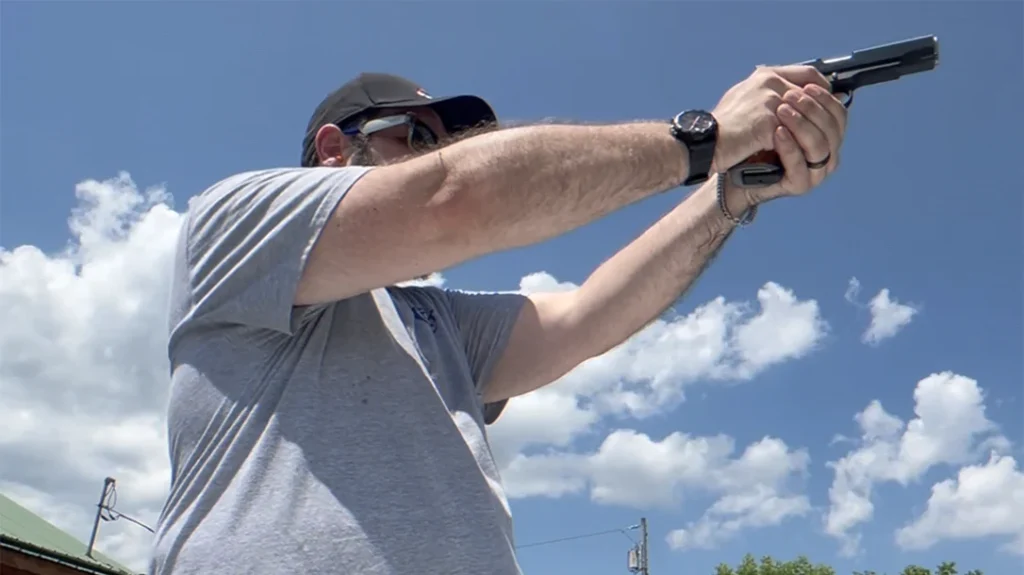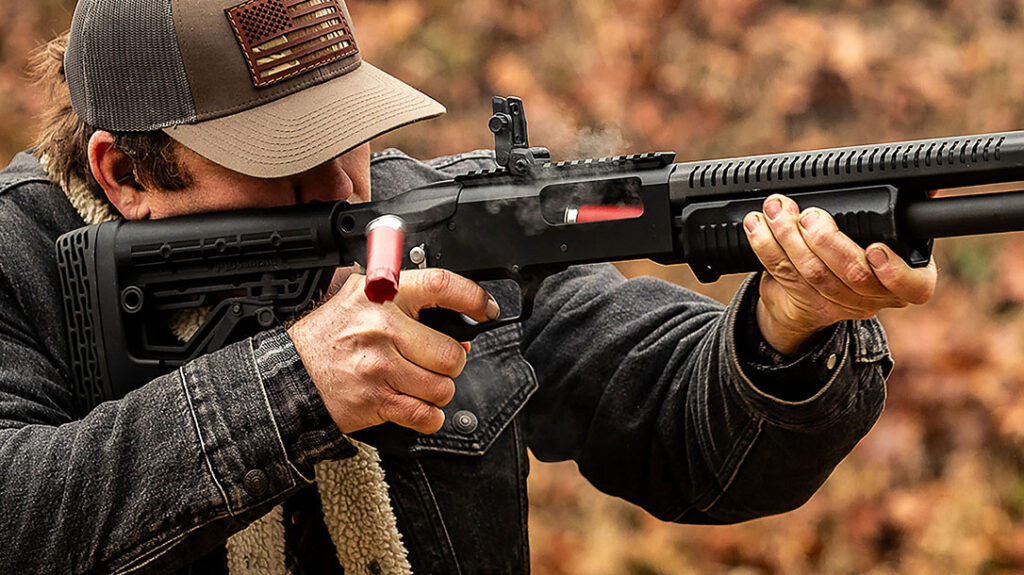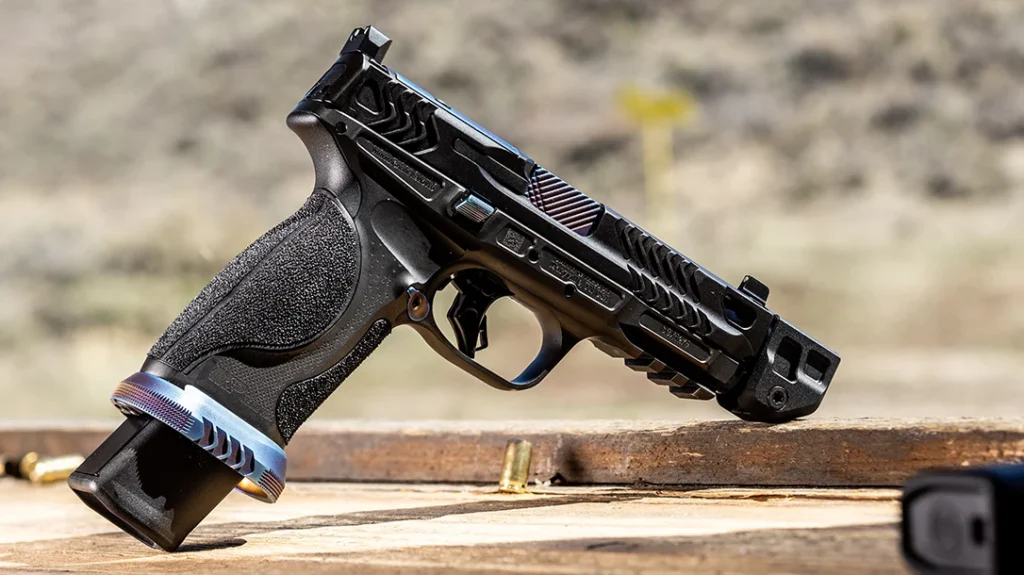What would a modern light rifle look like? The first and last light rifle that saw widespread use was the M1 Carbine. It was famously developed for non-infantry troops who needed something more substantial than an M1911 but less than the M1 Garand. In the modern era, the Light Rifle would fill the gap between a modern handgun and something like the AR-15.
The modern light rifle would be a compact, lightweight and low-recoiling rifle that could potentially hit targets out to 300 yards if you really pushed it. Ideally such a rifle would excel within 200 yards. Its mission would be to provide a handy, effective and efficient package.
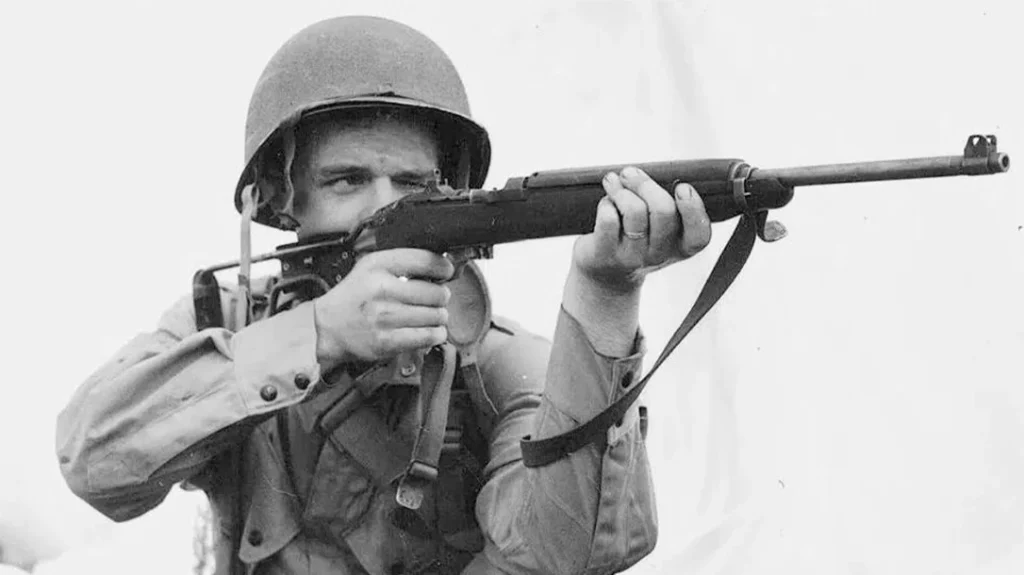
Advertisement — Continue Reading Below
It’s easy to argue that the AR-15 bridged the gap between full-powered battle rifles and carbines long ago.
For military purposes, service weapons like the M4 and M16 are very versatile. Frankly, these rifles meet the military’s needs. It likely won’t be adopting a light rifle anytime soon.
For the average Joe, the modern light rifle will need to offer some serious benefits or fill a niche that the AR-15 simply can’t.
Advertisement — Continue Reading Below
Rifle & Cartridge
The primary advantage the light rifle could offer over the AR-15 is a lighter and overall more compact system. This rifle should potentially be easier to store, and maybe even conceal. In a perfect world, we’d stick to a shorter barrel around ten inches. However, NFA regulations bring undue obstacles to making this happen for most people. Sure, a braced pistol could also be a stand-in for our light rifle concept. While I accept the idea of a braced pistol, I’m going to lean into a standard Title 1 rifle with a 16-inch barrel.
The original M1 Carbine used a unique .30-caliber cartridge that stood somewhere between a rifle and handgun cartridge in terms of size, power, and range. For a modern light rifle, we’d want a similar cartridge. I’d rule out the 9mm Luger pistol cartridge due to its range limitations. By virtue of their rims, magnum revolver cartridges can be difficult to feed in a semi-auto platform.
For that reason, PDW (personal defense weapon) cartridges are the most reasonable contenders.
Advertisement — Continue Reading Below
The PDW Angle
NATO created the Personal Defense Weapon, or PDW, concept in the 1990s. The idea was to develop weapon and cartridge systems that provided more range and capability than a pistol and still remain smaller and lighter than standard service rifles. NATO also wanted a cartridge that could penetrate light armor.
A lot of those requirements sound awfully similar to the M1 Carbine, right?
Two rounds were created: FN’s 5.7x28mm and HK’s 4.6x30mm.
Advertisement — Continue Reading Below
The 4.6x30mm works great, but the high price, lack of ammo availability, and the fact that only two commercial platforms chamber the cartridge make it a bit of a no-go. Until there is more ammo and platforms available, let’s focus on the 5.7x28mm instead.
There are many different 5.7 platforms that could be classified as light rifles. The one I’ve chosen to experiment with is likely the cheapest — the KelTec Sub 2000 Gen 3 in 5.7x28mm.
Why the KelTec Sub 2000?
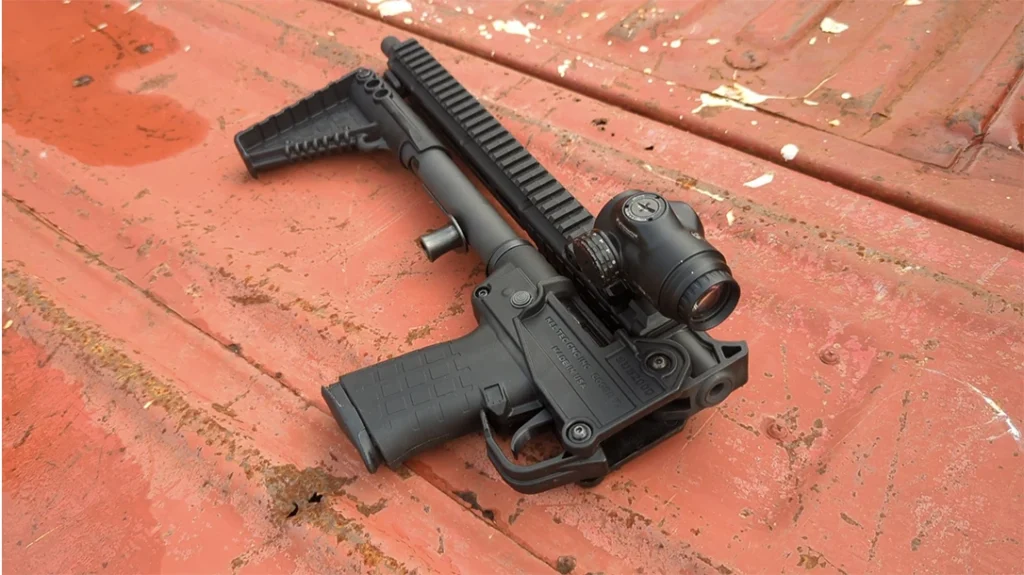
Advertisement — Continue Reading Below
I chose KelTec over other options for three main reasons.
First, it’s cheap and available.
Second, it fits my parameters of the modern light rifle: It’s a 5.7x28mm gun, semi-auto, magazine-fed and accommodates optics.
Advertisement — Continue Reading Below
What advantage does the KelTec SUB 2000 provide over an AR-15 carbine?
It’s extremely compact, 16.15 inches when folded. KelTec SUB 2000s are also easy to store and carry inside vehicles, homes, backpacks et cetera. It weighs a very miniscule 4.36 pounds, and when deployed and unfolded, the SUB 2000 is only 29.2 inches long (with the stock in its shortest position).
Deployment takes no time at all: just unlock, fold and lock in place.
Advertisement — Continue Reading Below
Going the Distance
SUB-2000s are typically considered PCCs and are chambered for 9mm and .40 S&W. The 5.7x28mm shouldn’t be seen as a pistol cartridge, but that seems to be the typical attitude toward the round. Several pistols chamber it, and most people see it as a close-range round.
It’s not a long-range round–but let’s treat it like a rifle round. This idea guided my choice to use a Primary Arms 3X Microprism optic. These optics have a tight eye relief, and I had to choke up on the gun to get a clean sight picture.
I also wanted to find a simple maximum point-blank range (MPBR) zero for the optic, gun, and cartridge.
Advertisement — Continue Reading Below
Maximum point-blank range, or MPBR, is the distance a bullet can travel without rising or falling more than a predetermined amount above or below the line of sight.
I’m not smart enough to math it out, but MPBR calculators are out there. I punched in my ammo’s G1 ballistic coefficient, the muzzle velocity, the sight height and a target size. I used a 6-inch target, so the MPBR will ensure I can hit that six-inch target anywhere between the near and far MPBR and out to the maximum MPBR.
The 5.7 MPBR
Let me describe MPBR another way: Imagine an extremely long pipe that’s six inches in diameter. If I zero my SUB 2000 exactly how the MPBR calculator suggests, I can perfectly center the weapon at one end of this pipe, pull the trigger and expect that the bullet will not strike the inner walls of the pipe from 0 yards all the way to 170 yards (according to the calculator)
That’s because the calculator spat out an MPBR of 17/147. This means that I can zero at 17 yards and hit targets out to 147 yards with the same center hold. With a maximum MPBR of 170 yards, I’ll hit a six-inch target out to 170 yards, but the bullet would impact on the lower portion of my target. More specifically, at 170 yards, the shots would print 2.9 inches low. Any shots impacting below those 3 inches would logically strike the imaginary pipe, so they’d technically fall out of MPBR.
I zeroed at 17 yards and went out to 150 yards. I figured an extra three yards wouldn’t be all that difficult to work with. It was nothing to zero at 17 yards. At 150 yards, I put rounds where I wanted them for the most part, save for a couple of flyers related to my lack of offhand shooting skills.
I had a little better luck hitting a 10-inch steel gong with my center hold. I noticed that my shots were printing a little lower than I’d like, so I adjusted the zero an inch higher, and boom! The KelTec SUB 2000 was dead on. Seeing the MPBR work in person was absolutely smile-inducing.
Then I stretched things out to my range’s far limit, 200 yards. According to my ballistic chart, bullets drop about ten inches at 200. Resting the rifle on one of my fence posts, I took careful aim and held the sight roughly five inches over the steel gong, hoping to hit dead center. I hit it, mostly.
Up Close
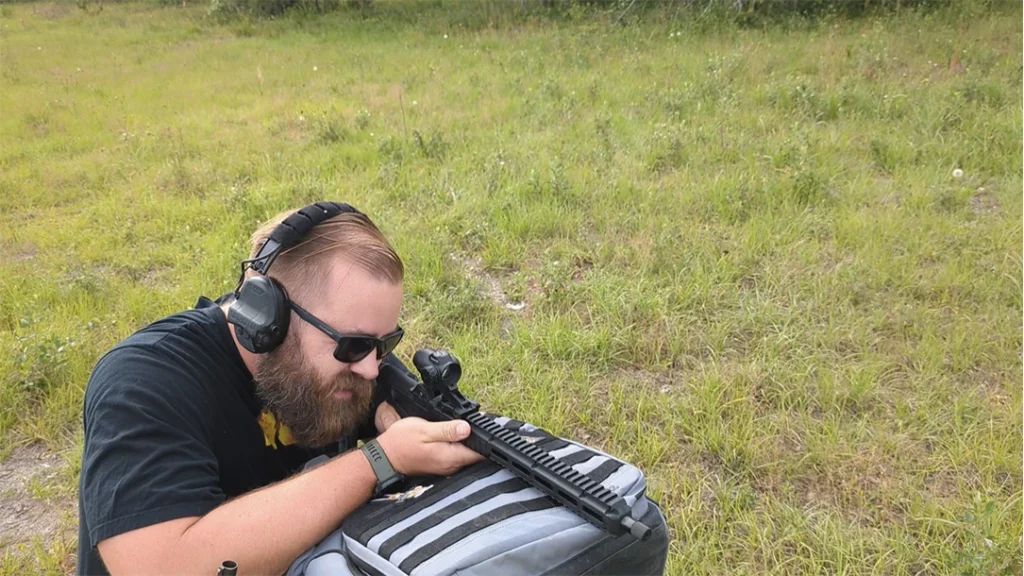
A light rifle should be easy to handle up close. In fact, it should excel up-close. The idea is to be able to quickly and easily engage targets with multiple rounds. The KelTec SUB 2000 uses a blowback action. Thanks to the size of the 5.7x28mm cartridge, there is hardly any recoil.
The magazine-in-grip design of the KelTec SUB 2000 makes the rifle nice and short. It helps keeps its mass balanced to the rear which makes it quite easy to transition between targets. That’s one of the reasons it’s easy to use up-close and in buildings. The same is true for using it around vehicles. It’s even easier when its stock is folded up.
In a close-range defensive scenario, you can pump a lot of rounds into a threat very quickly.
A Modern Light Rifle
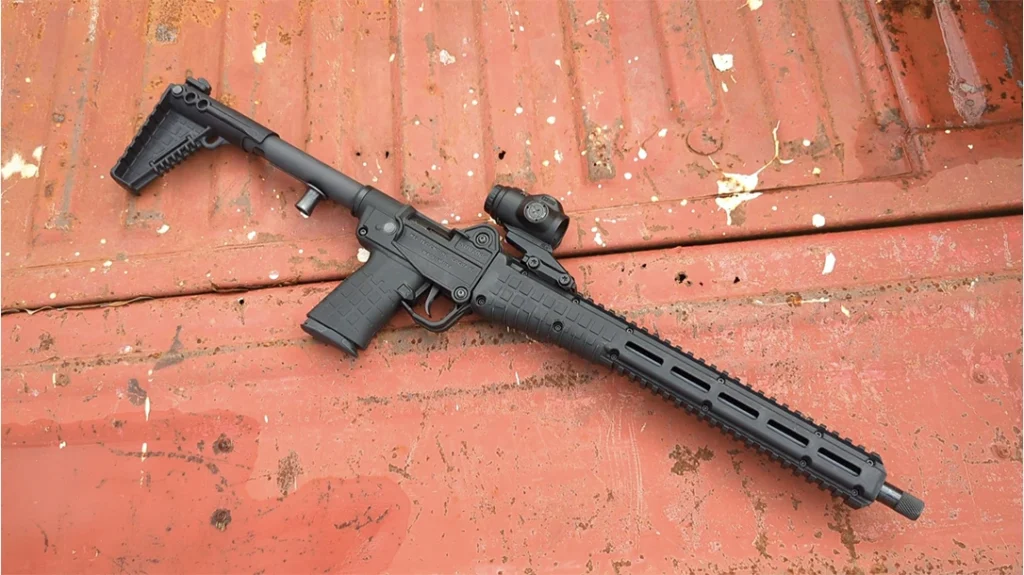
The SUB 2000 is certainly not an M1 Carbine. Yet it hits the right notes to fill a similar role. It’s an extremely compact and lightweight rifle that’s still capable of reaching 200 yards. And at only 29 inches long (with a 16.15-inch barrel–and the potential to be that same length if fired with the stock folded).
The light rifle is a compact tool with decent range and ballistic capability. It outshoots pistol-caliber carbines and is much smaller than an intermediate-caliber rifle. It would be an easy rifle to throw onto your ATV, side-by-side or a farm truck. Such a rifle would work excellently as a camp rifle; it would be great for pest removal and small-game hunting.
For the recoil-sensitive, the KelTec SUB 2000 Gen 3 chambered in 5.7x28mm can be a very low-recoil and lightweight home defense option as well. It’s not going to replace a 5.56mm carbine, but it’s easy to make the case for its small footprint and utility.
